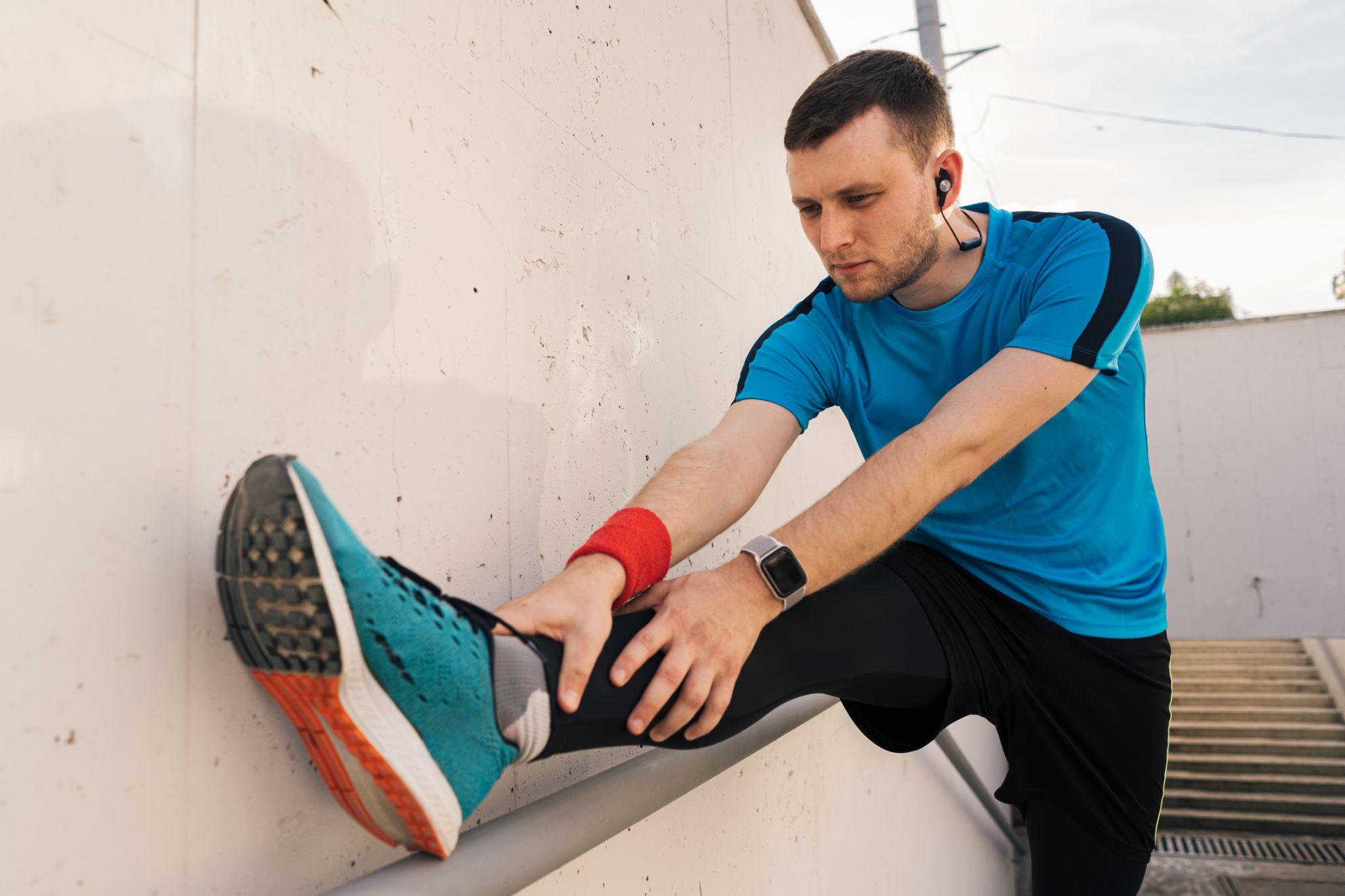When to Suspect a Stress Fracture in Athletes: Warning Signs, Diagnosis & Recovery
When to Suspect a Stress Fracture in Athletes

Persistent pain during activity that worsens with exercise but improves with rest is one of the earliest warning signs of a stress fracture.
A stress fracture is a minor crack or the extensive bruising of a bone, most commonly the result of repetitive stress or overuse, and not the result of a singular trauma. Stress fractures accumulate over a period of time, whereas acute fractures suddenly occur and are not usually visible until pain has already developed. Sportswomen and men who run, jump, or participate in high-impact sports are more likely owing to the high intensity of training and competition.
Early diagnosis of stress fractures is essential. Neglecting early signs may result in progressive damage, whole fractures, or extended recovery. Early identification of signs enables athletes to initiate early medical intervention, minimize downtime, and avoid long-term effects.
What Is a Stress Fracture?
A stress fracture is distinct from a usual fracture in that it occurs gradually over time as a result of cumulative microtrauma. Microtrauma occurs when the stress to a bone being subjected to during exercise exceeds its intrinsic capacity to self-heal. Stress fractures result in pain and usually cause disruption to an athlete's function before they can identify a fracture.
Typical areas in which the stress fracture occurs in athletes include the shinbone (tibia), foot (metatarsals), hip, pelvis, and lower back. These areas are susceptible because of their repeated contact with running, jumping, and other high-impact activities. Over time, repeated stress can lead to a hairline crack in the bone or deep bruising in the bone.
Common Causes and Risk Factors
Stress fractures occur as a result of an interaction between intrinsic weaknesses and extrinsic stressors. Sudden activity change or overtraining is one of the primary reasons. Gradual progression in running distance, adding high-impact sports, or repetitive motion without adequate resting time makes bones weak.
Footwear or training surface quality may also be poor. Concrete running or shoes that are old subject bones to increased stress, leading to microdamage and fatigue at a faster rate. Incorrect biomechanics, such as flat feet, excessive arches, or improper gait, may also result in uneven loading, hence adding the risk of a stress fracture.
Nutrient deficiencies, such as calcium or vitamin D deficiency, and disease states, such as eating disorders, can reduce the quality of the bone and risk of fracture. Female athletes are especially susceptible since menstrual cycles are disrupted or energy reserves are depleted, both of which influence bone density. A history of previous injury, especially a previous fracture or inherent weakness of the bone, also presents a risk of stress fracture.
Early Warning Signs of a Stress Fracture

Sudden performance decline or inability to maintain usual training intensity may signal an underlying bone stress injury.
Stress fractures tend to begin insidiously with increasingly worsening symptoms. Pain confined to a specific region that worsens with use and resolves with rest is one of the early presentations. Swelling or tenderness over a bone region may be noted in athletes. Pain tends to worsen with weight-bearing activities like running, jumping, or walking, and may be preceded by a dull, aching sensation even after doing minimal activity.
Other warning signs are changes in performance, like decreased endurance or changed running mechanics. Swelling or bruising of a minor type at the point of injury will sometimes happen. Awareness of these warning signs is important, as repeated training without rest can transform a minor injury into a more severe fracture.
When to Suspect a Stress Fracture
When the pain continues after resting and does not change even after a few days, then the players need to think of having a stress fracture. Pain that comes on at first only with sport, but subsequent pain with ordinary activities is another warning sign.
Localized pain upon bony palpation, pain on hopping or single-leg standing, and increasing pain in the face of ongoing training are strongly suggestive. Any athlete who experiences these symptoms needs immediate orthopedic evaluation to avoid worsening and permit healing.
How Stress Fractures Are Diagnosed
Stress fracture diagnosis begins with clinical assessment. The orthopedic physician checks out the region, conducts a physical exam, and identifies areas of tenderness. Even though the initial choice involves using X-rays, they cannot detect early-stage stress fractures since such fractures are very tiny.
Bone scans and MRI are more sensitive and can detect stress fractures prior to their visibility on X-ray. In some deep or complicated bone fractures, CT scans may be used for diagnosis. Causative variables such as training load, nutrition, footwear, and biomechanics are also taken into account by orthopaedic experts to develop a balanced picture and build a sound recovery plan.
Common Types of Stress Fractures in Athletes
Stress fractures may happen in specific bones depending on the sport and training regimen. Stress fractures of the tibia are prevalent among runners and basketball players as a result of repeated shin impact. Sprinting and jumping cause metatarsal stress fractures of the foot.
Stress fractures of the femoral neck in runners are ominous and necessitate immediate medical care because of the potential for a fracture. Stress fractures of the pelvis occur in endurance athletes and individuals with inadequate nutrition or inadequate bone density. Navicular midfoot stress fractures occur commonly in football, tennis, or other sports demanding repetitive jumping or pivoting.
What To Do If a Stress Fracture Is Neglected?
If not treated, a stress fracture can have disastrous effects. The crack could develop into a complete break, which may require surgery to repair. Healing that is delayed will more than likely result in chronic pain, restricting athletic ability and daily activities.
Also, untreated stress fractures can cause irreversible weakening of the bone, biomechanical alterations, and risk of future fracture. In sports competition, this can result in weeks of time out from training or even a career-threatening injury. Thus, early identification and management are crucial to avert such complications.

High-impact sports such as running, basketball, gymnastics, or soccer increase the risk due to repetitive loading on bones.
Treatment and Recovery
The management of stress fractures is primarily rest and activity modification. In most cases, sports persons are recommended not to participate in high-impact sports for six to eight weeks, and the bone will start healing by itself. Immobilization with a boot or walking brace is required in a few instances to rest the bone.
Pain control does include the application of ice and anti-inflammatory medication, but only under a physician's orders. Physical therapy becomes a large aspect of the healing process, and flexibility exercises, strengthening, and return to activity are the modalities. Good nutrition, including adequate sources of calcium, vitamin D, and protein, aids in healing bones.
Return to sport should be performed following medical clearance and with the return of motion without pain. Increasing levels and surveillance in a gradual fashion are essential to prevent re-injury.
When to see an Orthopedic Specialist
Athletes may be seen by an orthopedic specialist if, even after rest, there is pain, or if there is tenderness, swelling, or inability to bear weight. Pain that develops through several cycles of training or a history of prior stress fractures must also be assessed by a professional. In case pain starts affecting normal activities of daily living or is intensely increased, it needs immediate attention. Fractures can be prevented and recovery time reduced with prompt treatment from an orthopedic specialist.
Conclusion
Stress fractures are subtle symptoms of bone weariness and cannot be taken lightly. Identification of symptoms, knowledge of risk factors, and initial medical assessment are important measures in the preservation of athletic performance and the avoidance of serious injuries.
With proper rest, activity modification, physiotherapy, and diet, athletes may recover safely and reach optimal performance. Cautiousness, sensible training habits, and preventive bone management remain the best means of preventing stress fractures and promoting long-term musculoskeletal health.
Frequently Asked Questions
Q1. Can one walk on a stress fracture?
Yes, but pain and danger will accompany walking. Weight-bearing will worsen the fracture and impede recovery.
Q2. How long does it take for a stress fracture to heal?
Healing would occur in 6–8 weeks, depending upon the location and severity of the fracture.
Q3. Are stress fractures treated without a cast?
Most are, provided strict rest and activity modification are employed. There are some situations in which protection with a brace or boot is required.
Q4. Do stress fractures appear on X-rays?
No, not always. Stress fractures in their early stage may need an MRI or bone scanning for precise identification.
Q5. Are stress fractures preventable in sportspeople?
Prevention itself is not feasible, but progressive build-up in training, adequate rest, appropriate shoes, optimal nutrition, and frequent orthopedic checks lower the risk considerably.